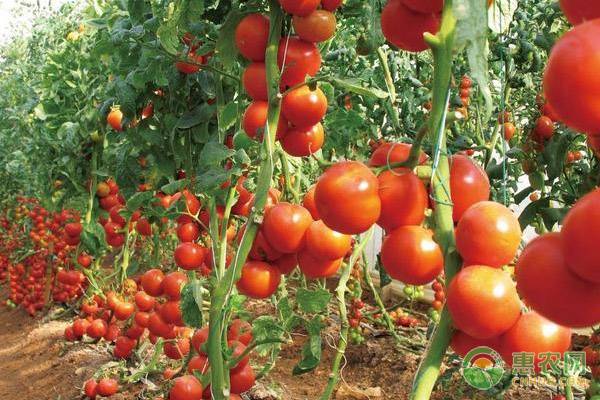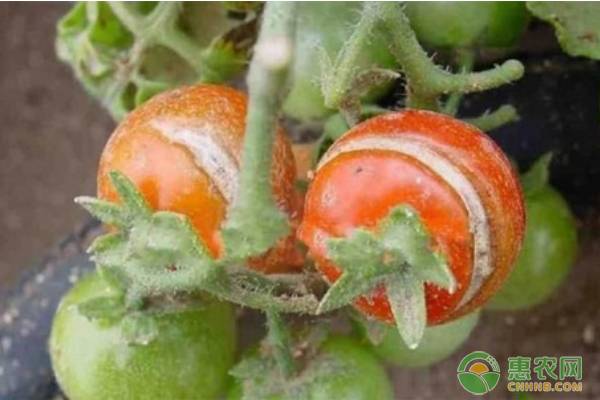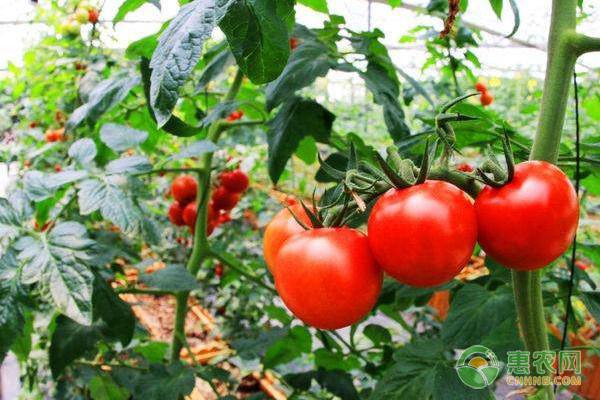Farmers who grow tomatoes know that tomatoes have more pests and diseases and affect the normal growth and development of plants, especially due to some common problems caused by improper fertilization, such as plant length, premature aging, tender stem splattering, leaf rolling, deformity, falling flowers. Falling fruit and other issues. If these problems are not prevented in time, it will affect the normal growth of tomatoes, and even lead to the reduction of tomato production. What are the common problems in the process of tomato planting? How to prevent it?

1. Tomato plant seedlings
Planting tomatoes in greenhouses, due to partial application of nitrogen fertilizer, excessive watering, and the temperature control in the shed is not strict, especially at night, the temperature is too high, it is easy to induce the plant to grow long, thus forming a "crazy".
Control measures: Rational application of nitrogen fertilizer, especially the need to control the amount of nitrogen fertilizer. If the base fertilizer is sufficient, do not apply fertilization water before flowering and fruit setting. Reasonable drug control, common control agents have paclobutrazol, meperazine, chlormequat. It can be controlled by using 50% chlormequat 1500 times liquid, spray once every 7 days, 2-3 times in a row, or use sodium nitrophenolate and seaweed foliar fertilizer with certain control effect. .
2, tomato plant premature aging
When the base fertilizer is applied, the planting of the plant is less, and the main root parts of the plant are less fertilized. In the later stage of the result, the amount of fertilizer is insufficient and the plant is prematurely aging, and the deformed fruit is more and the quality is reduced.
Control measures: On the basis of ensuring the nitrogen, phosphorus and potassium needed for tomato growth, it is necessary to apply more nutrient fertilizers such as farmyard manure, copper, iron and zinc to help regulate soil organic matter, enhance soil permeability and promote tomato root system. Good growth.
3, tomato stem rupture
The stem cleavage is mainly caused by calcium deficiency and boron deficiency in plants or due to poor environmental conditions, which hinders the absorption of calcium and boron during the growth period.
Control measures: 40 kilograms of silicon-calcium fertilizer and 1-1.5 kilograms of borax are applied per acre along with the whole land. Before planting, more decomposed organic fertilizer should be applied. After planting, spray the foliar fertilizer once every 7-10 days, and use Huimanfeng multi-element compound fertilizer 400 times. For the diseased plants, 0.3% calcium chloride or calcium supplementation 1000 times liquid can be sprayed on the foliar surface, and the upper part of the stem and leaves should be sprayed once every 7 days for 2-3 times.

4, tomato leaf
The organic matter content in the soil is low, or the soil lacks phosphorus, potassium, calcium and magnesium, iron, manganese, copper and other nutrients to cause the leaf.
Control measures: Apply the decomposed organic fertilizer as the base fertilizer, cover the cultivation with plastic film, and then rationally water the fertilizer after the result period, so that the plant grows vigorously and not long, and drains in time after rain. In the result period, foliar application of 0.3% potassium dihydrogen phosphate or compound fertilizer such as micro-fertilizer has a good effect.
5, tomato malformation flower
Partial application of nitrogen fertilizer, or excessive water control, easy to cause deformed flowers.
Control measures: nitrogen fertilizer is sufficient in the seedling stage, but it should not be excessive, and phosphorus, potassium fertilizer and trace elements such as calcium and boron also need appropriate amount. When the flower bud enters the differentiation stage, if there are symptoms such as shallow leaf color, thin leaves, and thin stems, the thin urea and potassium dihydrogen phosphate solution are poured at the right time.
6, tomato falling flowers and fruit
Partial application of nitrogen fertilizer caused the plant to grow long, the reproductive growth was inhibited, and the flower organs were not developed, which would easily cause the flowers to fall. In addition, although the lower fruit set is better, the nutrient competition between the flowers and fruits is imbalanced due to the lack of timely topdressing, and the supply of nutrients in the upper layer is insufficient, resulting in “flowersâ€.
Control measures: increase the application rate of organic fertilizer to ensure the balance of soil nutrient supply. In the middle and late stages, a 0.3% potassium dihydrogen phosphate solution can be applied to the foliage. For the occurrence of premature aging caused by obvious deficiency of fertilizer, timely application of quick-acting fertilizer, foliar spray of boron, zinc, calcium nutrient solution to promote the elongation of pollen tube.

The above are the common problems and control measures in the process of tomato planting. Many farmers will increase the amount of fertilizer when they encounter the above problems, but in fact, we need to control according to the symptoms of tomato, and the right medicine. Farmers who grow tomatoes must master the above points and control measures. I hope the above can help tomato growers.
For the wonderful pictures and popular comments on growing tomatoes, you may be interested in the following recommended contents. Welcome to read.
Anesthesia Medical Co., Ltd. , https://www.medicaldiverse.com